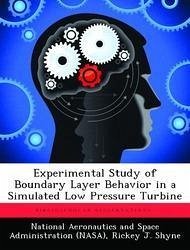Nicht lieferbar

Experimental Study of Boundary Layer Behavior in a Simulated Low Pressure Turbine
Versandkostenfrei!
Nicht lieferbar
A detailed investigation of the flow physics occurring on the suction side of a simulated Low Pressure Turbine (LPT) blade was performed. A contoured upper wall was designed to simulate the pressure distribution of an actual LPT blade onto a flat plate. The experiments were carried out at Reynolds numbers of 100,000 and 250,000 with three levels of freestream turbulence. Freestream turbulence levels ranging from 0.8% to 3% was used in this experiment. Smoke-wire flow visualization data was used to confirm that the boundary layer was separated and formed a bubble. Hot-wires (single and x-wire) ...
A detailed investigation of the flow physics occurring on the suction side of a simulated Low Pressure Turbine (LPT) blade was performed. A contoured upper wall was designed to simulate the pressure distribution of an actual LPT blade onto a flat plate. The experiments were carried out at Reynolds numbers of 100,000 and 250,000 with three levels of freestream turbulence. Freestream turbulence levels ranging from 0.8% to 3% was used in this experiment. Smoke-wire flow visualization data was used to confirm that the boundary layer was separated and formed a bubble. Hot-wires (single and x-wire) and surface mounted hot-film gases and static pressure taps were used to map the flowfield. The transition process over the separated flow region is observed to be similar to a laminar free shear layer flow with the formation of a large coherent eddy structure. For each condition, the locations defining the separation bubble were determined by careful examination of pressure and mean velocity profile data. Transition onset location and length determined from intermittency profiles decrease as freestream turbulence levels increase. Additionally, the length and height of the laminar separation bubbles were observed to be inversely proportional to the levels of freestream turbulence.










